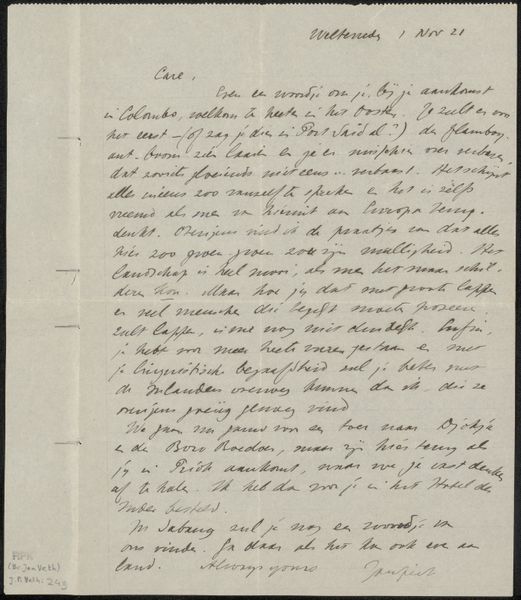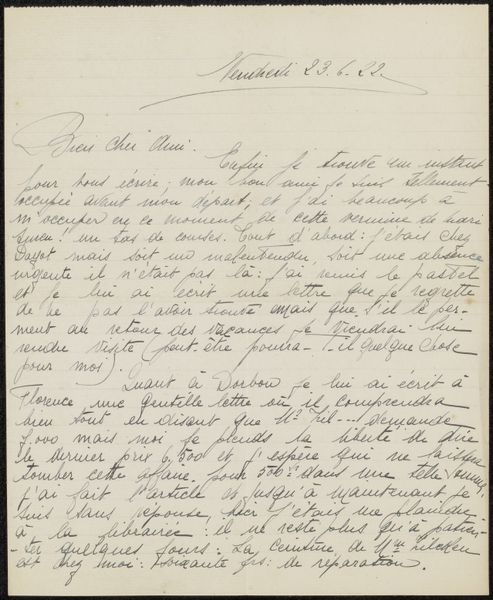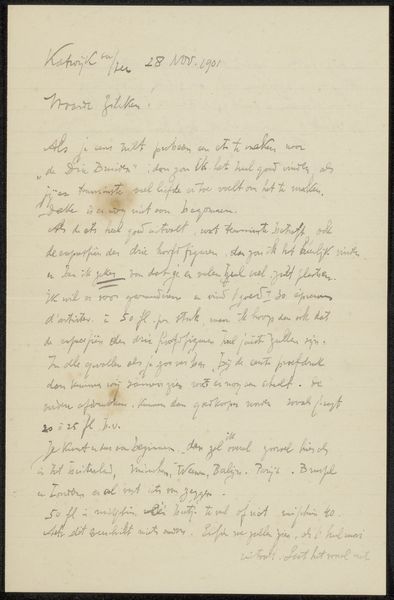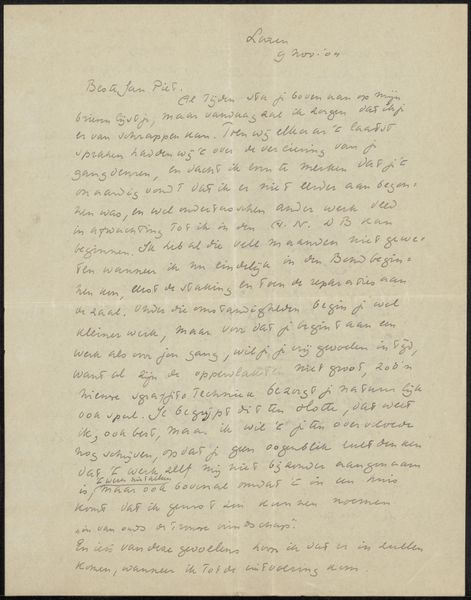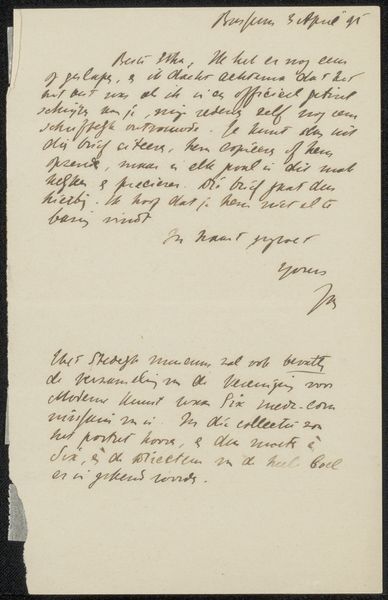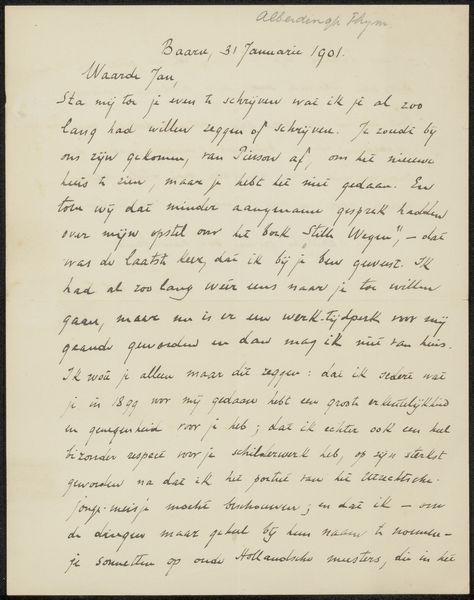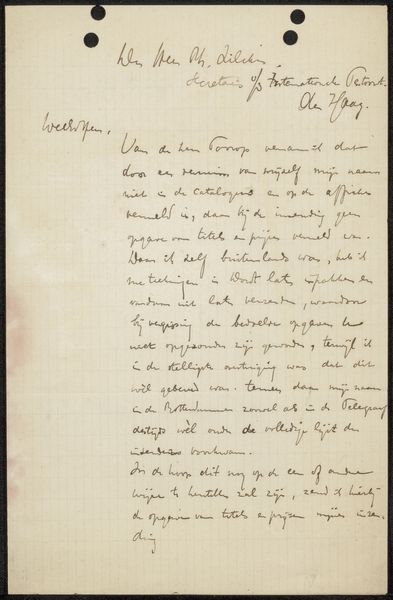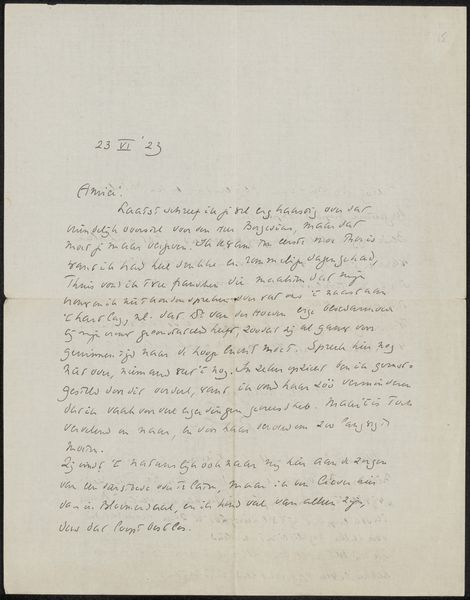
drawing, print, paper, ink, pen
#
drawing
#
narrative-art
#
ink paper printed
# print
#
paper
#
personal sketchbook
#
ink
#
pen-ink sketch
#
sketchbook drawing
#
pen
#
calligraphy
Copyright: Rijks Museum: Open Domain
Curator: This unassuming sheet holds a whole world. "Brief aan Ary Johannes Lamme," possibly from 1831. Look at the handwritten text, the penmanship itself almost a form of drawing. What catches your eye about it? Editor: It's a letter, so intimate, yet presented almost as a public document. It makes me feel like I am eavesdropping. How does the act of writing as art contribute to its meaning? Curator: The letter is a powerful symbol of communication across distance and time. Consider how writing was viewed then – as a vital link. Notice how Balan expresses his message. Editor: So the artistic expression isn't just in the visual aesthetics but also in the tone and delivery? Curator: Precisely. Every stroke of the pen, the very construction of the sentences, holds intention and meaning. The handwriting itself conveys Balan’s character and emotional state, the relationship to the receiver; in essence, Balan imprints a part of himself within the image. In its display as art, it transcends the act of reading. Editor: It feels incredibly personal. It almost feels as though you could extract some level of emotion or psychology from the handwriting. Curator: Indeed! It encapsulates a fragment of history, a relationship frozen in time. As you engage, what feeling is the work giving to you? Editor: Definitely reflection, but with a sense of nostalgia mixed with the mundane. The message has a sort of human touch you do not find in more modern means of communication. Curator: So we find then the real depth in its preservation! A mirror reflecting humanity across the ages. Editor: Absolutely, this really highlights how even simple communications carry layers of cultural significance. Thanks for illuminating this!
Comments
No comments
Be the first to comment and join the conversation on the ultimate creative platform.


